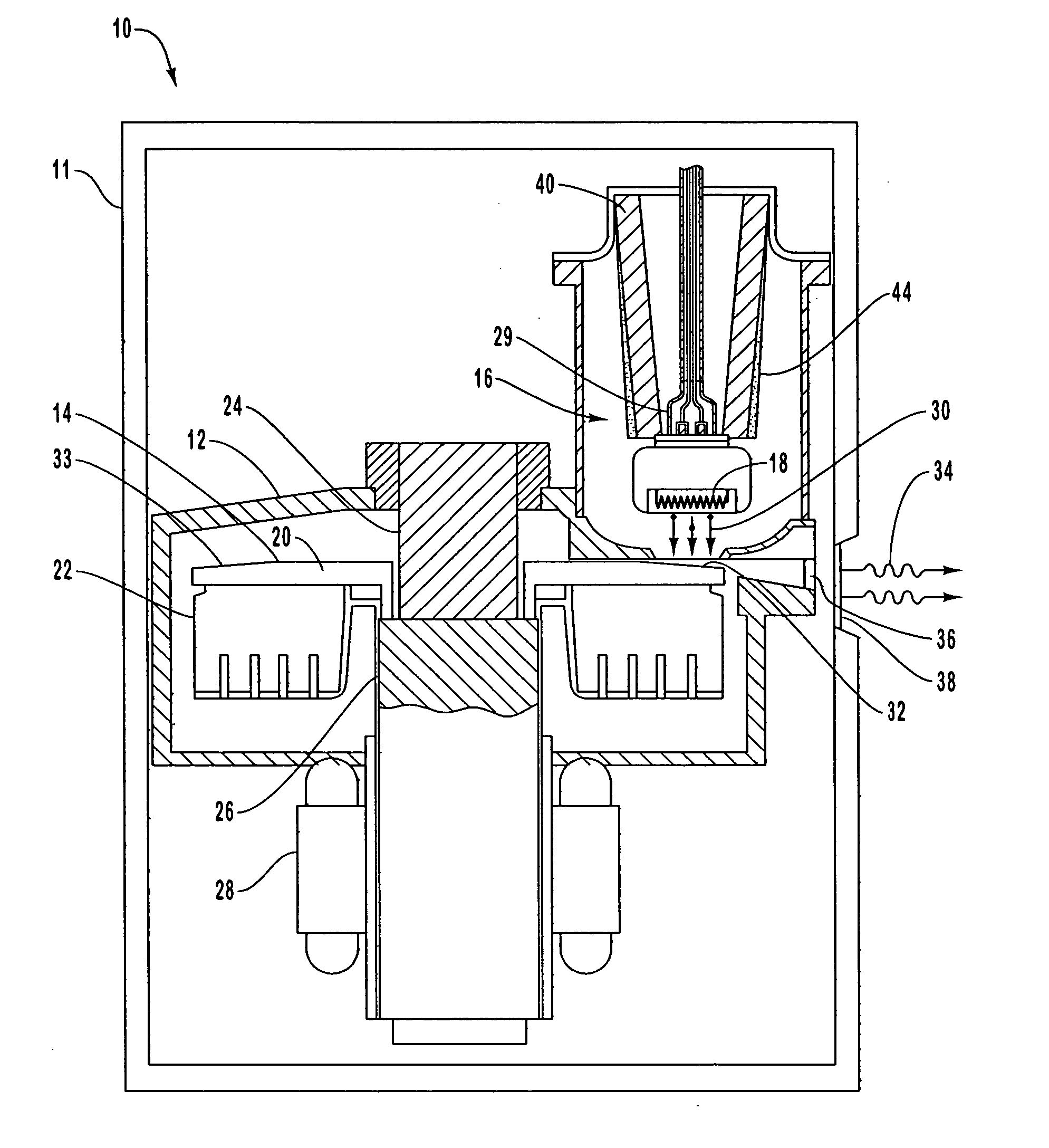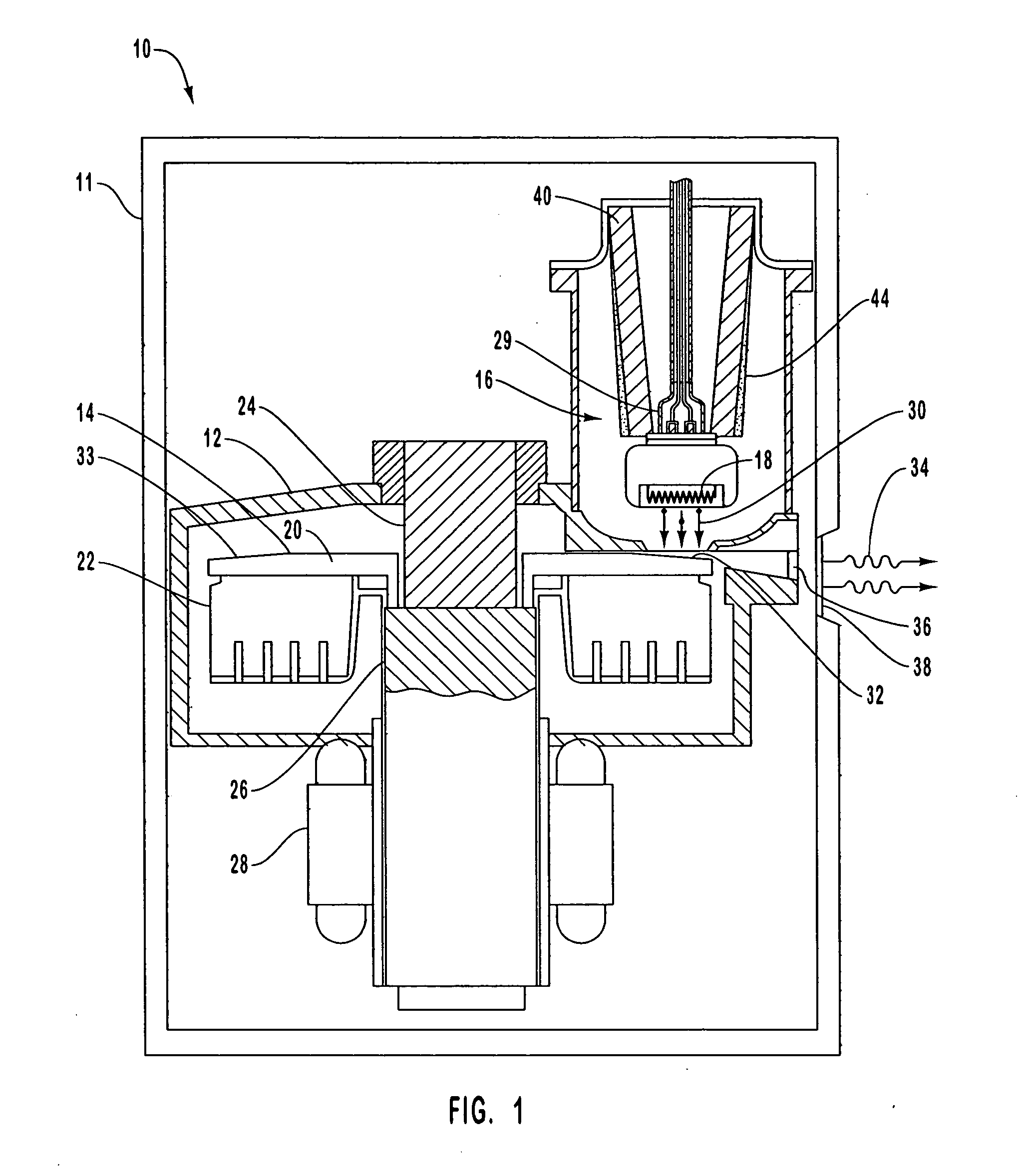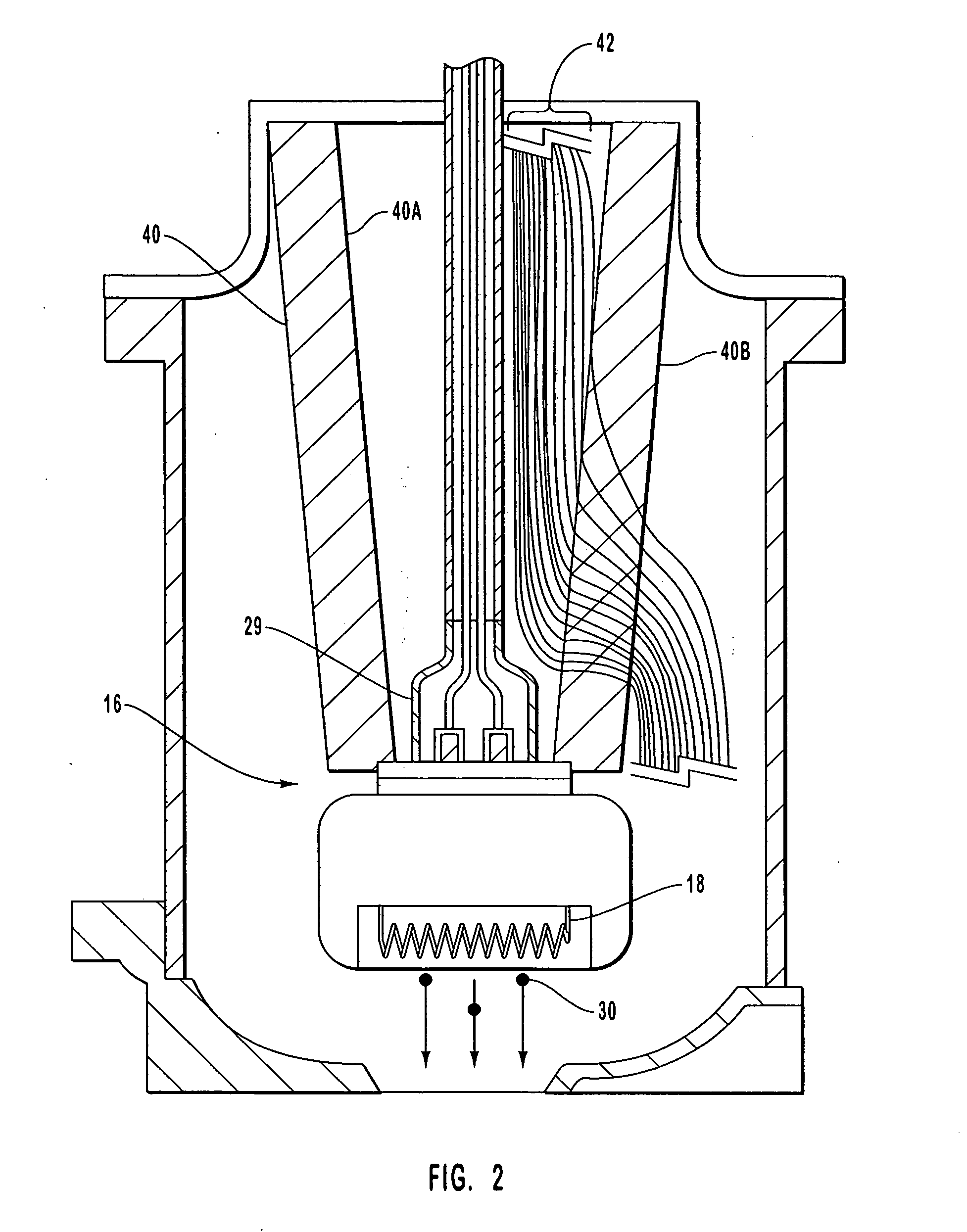Apparatus and method for shaping high voltage potentials on an insulator
a technology of insulating structure and surface, which is applied in the manufacture of x-ray tubes, electric discharge tubes/lamps, and electromechanical systems, etc., can solve the problems of non-uniform application of coating materials, and achieve the effects of increasing the conductivity of the surface, and increasing the amount of metallic lead
- Summary
- Abstract
- Description
- Claims
- Application Information
AI Technical Summary
Benefits of technology
Problems solved by technology
Method used
Image
Examples
first embodiment
[0038] Attention is now directed to FIG. 3, which depicts a portion of the x-ray tube 10 near the cathode 16. In accordance with the present invention, the outer vacuum surface 40B of the insulating cathode cone 40 has disposed thereon a non-uniform coating material 44. The coating material 44 is used to modify the voltage potential distribution of the electric field along the surface of the cone vacuum surface 40B during tube operation, as explained further below. To that end, the coating material 44 is sufficiently electrically conductive with respect to the insulating material in order to enable it to modify the voltage distribution. Accordingly, the electrically conductive coating material 44 is understood to comprise one of a variety of conductive, semi-conductive, and semi-insulating substances including, but not limited to carbon, silver, copper, nickel, chromium, etc. Alternatively, the coating material 44 could comprise two or more materials applied to the cone vacuum surfa...
second embodiment
[0046] Attention is now directed to FIG. 6, depicting in cross section the anode insulator 68 of the double-ended x-ray tube 60 of FIG. 5. FIG. 6 depicts the anode insulator 68 prepared for use in the x-ray tube 60 in accordance with the present invention. In this embodiment, the surface of the insulating structure itself is modified in a non-uniform manner to enable a more even voltage potential distribution to exist along the surface thereof during tube operation. For example, an anode insulator 68 composed of leaded glass is provided. A first region 72A of the inner vacuum surface 68A remains uncovered while the rest of the inner surface in masked with a heat resistant covering. The anode insulator 68, and particularly the inner vacuum surface 68A, is then fired in a hydrogen-rich atmosphere for a time sufficient to partially chemically alter the unmasked portions of the leaded glass inner vacuum surface 68A in accordance with the following chemical reaction:
PbO2+4H++2e−=Pb2++2H2...
third embodiment
[0050] Reference is now made to FIG. 7, which depicts in cross section the cathode insulator 70 of the double-ended x-ray tube 60 of FIG. 5. FIG. 7 depicts the cathode insulator 70 prepared for use in the x-ray tube 60 in accordance with the present invention. In this embodiment, an electrically conductive pattern is defined on the surface of the insulating structure to create a more even voltage potential distribution along the surface during tube operation.
[0051] As can be seen in the cross sectional view of FIG. 7, the inner vacuum surface of the cathode insulator 70, designated as 70A, has disposed thereon a layer of coating material 80 through which has been scribed a path 82. The coating material 80 is preferably a conductive, semi-conductive, or semi-insulating coating similar to the coating material 44 described in the first embodiment. As such, the coating material 80 may comprise the same materials as the coating material 44, and may be applied using those techniques descr...
PUM
 Login to View More
Login to View More Abstract
Description
Claims
Application Information
 Login to View More
Login to View More - R&D
- Intellectual Property
- Life Sciences
- Materials
- Tech Scout
- Unparalleled Data Quality
- Higher Quality Content
- 60% Fewer Hallucinations
Browse by: Latest US Patents, China's latest patents, Technical Efficacy Thesaurus, Application Domain, Technology Topic, Popular Technical Reports.
© 2025 PatSnap. All rights reserved.Legal|Privacy policy|Modern Slavery Act Transparency Statement|Sitemap|About US| Contact US: help@patsnap.com



